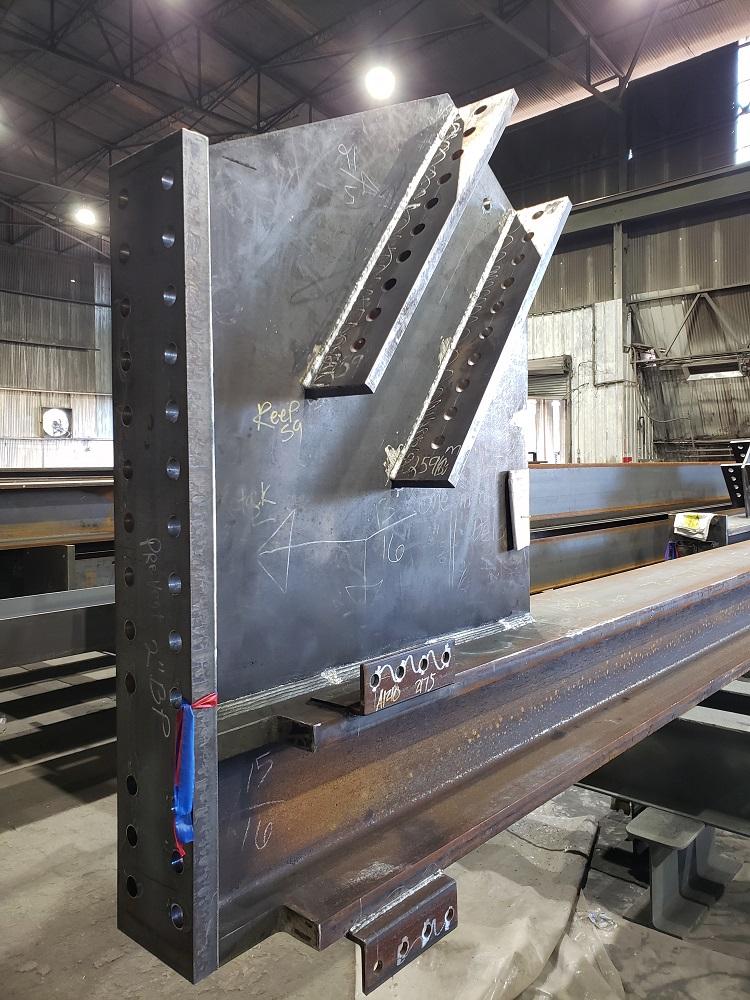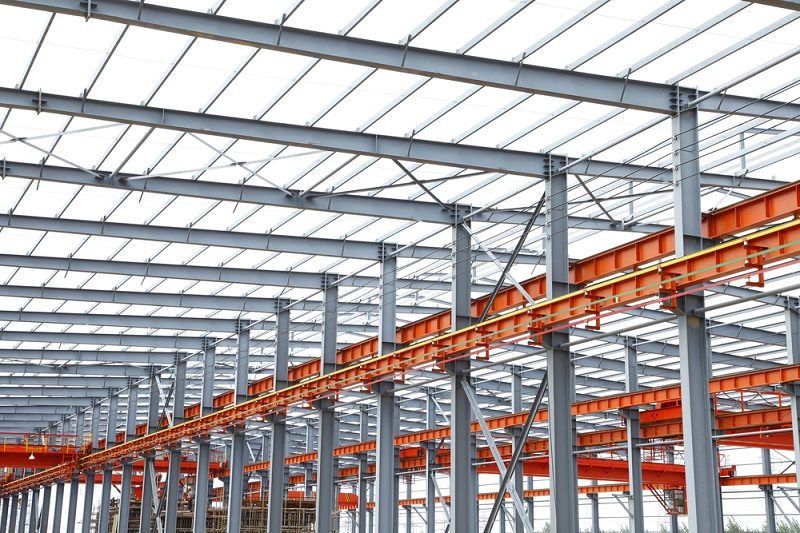Comprehensive Evaluation of Cutting-Edge Techniques in Steel Construction Industry
As the steel fabrication market continues to evolve, the combination of cutting-edge strategies has actually come to be important for remaining affordable and fulfilling the demands of modern manufacturing requirements. In this vibrant sector where technology plays a critical function, comprehending the subtleties of these innovative strategies is not simply an alternative but a necessity for those looking to forge ahead in the ever-evolving world of steel construction.
Laser Cutting Developments
In the realm of steel manufacture, laser cutting advancements have revolutionized the precision and efficiency of steel shaping procedures. By using the power of concentrated laser beams, manufacturers can now attain unrivaled levels of precision when reducing via different types of metals. This technology enables intricate layouts to be implemented with marginal material wastage, making it an affordable service for industries calling for high accuracy elements.
One of the vital benefits of laser cutting is its capability to handle a large range of products, including stainless-steel, light weight aluminum, and carbon steel, effortlessly. The process generates clean, burr-free sides, removing the requirement for added completing steps. In addition, the non-contact nature of laser reducing reduces the threat of material contamination, causing greater top quality end products.
Additionally, laser reducing machines can be set to make swift, accurate cuts, significantly minimizing production time contrasted to standard cutting approaches. This rate and accuracy make laser reducing specifically appropriate for mass production settings where efficiency is vital. As technology remains to breakthrough, laser cutting is poised to play an increasingly crucial role in the steel construction sector.

CNC Machining Innovations
The development of CNC machining innovations has ushered in a new period of accuracy and efficiency in the steel fabrication market. Computer System Numerical Control (CNC) equipments have transformed steel manufacture by supplying unrivaled accuracy and repeatability in the manufacturing procedure. metal fabrication melbourne. Among the key developments in CNC machining is the combination of innovative software program systems that make it possible for real-time surveillance and adjustments, leading to enhanced productivity and quality assurance
Moreover, the growth of multi-axis CNC equipments has actually enabled the manufacture of intricate steel parts with complex styles that were previously testing to generate. These devices can carry out a large range of machining operations, consisting of milling, exploration, transforming, and grinding, all with high levels of precision.
In addition, the unification of automation and robotics in CNC machining has structured production procedures, lowered preparations, and reduced the margin of error. This integration of cutting-edge modern technologies not just improves effectiveness but additionally makes sure constant quality across all produced steel parts. In final thought, CNC machining developments remain to drive improvements in the steel construction market, setting brand-new standards for accuracy and performance.
Automated Welding Technologies
Automated welding innovations have transformed the steel fabrication sector, boosting effectiveness and precision in the welding procedure. These innovative technologies use computer-controlled systems to automate the welding procedure, bring about higher performance degrees and improved weld top quality. Among the key advantages of automated welding is the ability to carry out intricate welds with constant precision, minimizing the likelihood of mistakes and rework.
Robot welding systems go to the forefront of automated welding modern technologies, providing unparalleled rate and precision. These systems can take care of a broad array of welding tasks, from basic to elaborate, easily (steel fixing). By utilizing sophisticated sensing units and software program, robot welders can adjust to variants in material imp source and joint geometry, making sure an attire and reliable weld
Moreover, automated welding modern technologies boost workplace security by lessening the direct exposure of human welders to harmful fumes and extreme heat. As the steel fabrication market continues to progress, incorporating automated welding modern technologies will certainly be essential for firms looking to stay competitive and meet the growing demands for top quality welded products.
Robotics Combination in Construction
Making use of robot systems in fabrication procedures has actually ended up being a crucial approach for boosting performance and accuracy in modern manufacturing environments. Robotics assimilation in steel manufacture supplies a myriad of advantages, including increased performance, enhanced quality assurance, and boosted safety and security actions. These innovative robotic systems are geared up with advanced sensing units and programs capabilities, enabling them to carry out intricate jobs with a high level of accuracy and repeatability.
One of the vital benefits of robotics combination in steel fabrication is the capacity to automate repetitive tasks, such as material handling, reducing, welding, and assembly procedures. This not only accelerates production cycles yet additionally minimizes the danger of human error, other bring about greater overall item top quality. In addition, robots can run 24/7, dramatically boosting manufacturing result and conference tight job deadlines.

3D Printing in Steel Production
Having reinvented the steel fabrication sector via robotics assimilation, the blossoming expedition of 3D printing in steel manufacturing is positioned to more advance the realm of contemporary manufacturing strategies. 3D printing, additionally referred to as additive production, provides extraordinary layout freedom and complexity, making it possible for the creation of intricate steel structures that were previously unattainable through conventional production techniques. By making use of computer-aided layout (CAD) software, manufacturers can precisely control the layer-by-layer deposition of steel material, resulting in parts with improved geometries and performances.
Among the crucial benefits of 3D printing in steel production is its capacity to decrease material waste dramatically. Unlike subtractive manufacturing processes where excess product is cut away, 3D printing just utilizes the necessary amount of steel required for the final part. This efficiency not only causes cost savings yet likewise straightens with lasting manufacturing techniques by decreasing ecological effect.
Moreover, 3D printing makes it possible for quick prototyping and personalization, permitting the production of tiny sets of complicated steel components with short lead times. As the modern technology proceeds to develop and come to be much more obtainable, its combination right into mainstream steel manufacture procedures is anticipated to drive advancement and efficiency throughout the sector.
Verdict
Finally, the steel fabrication industry has seen significant advancements in strategies such as laser cutting, CNC machining, automated welding, robotics assimilation, and 3D printing. These innovative technologies have actually revolutionized the way steel items are made, resulting in enhanced effectiveness, cost-effectiveness, and precision. Proceeded financial investment in these innovative techniques is crucial for the sector to remain competitive and meet the demands of modern production processes.
As the steel manufacture industry proceeds to progress, the combination of innovative strategies has ended up being crucial for remaining affordable and meeting the demands of modern production requirements.One of the vital advantages of laser cutting is its capacity to manage a vast array of materials, including stainless steel, light weight aluminum, and carbon steel, with simplicity.Automated welding technologies have actually transformed the steel manufacture industry, improving efficiency and precision in the welding process.Having reinvented the steel manufacture industry via robotics combination, the burgeoning exploration of 3D printing in steel production is positioned to further breakthrough the world of modern-day manufacturing techniques.In verdict, the steel fabrication sector has actually seen try this site significant improvements in techniques such as laser cutting, CNC machining, automated welding, robotics integration, and 3D printing.